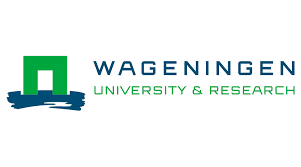Wageningen University & Research: Limiting the effects of drought rather than the causes
Drought is more than simply a lack of water. The impact that drought has depends on how we deal with the phenomenon and some groups of people are more vulnerable to drought than others. New research in Brazil is developing and testing tools to create a better drought monitor – one that monitors not only the availability of water, but also the actual impact of a lack of water. The aim is to enable better management of drought.
Drought affects more people than any other hazard, and its impact is likely to increase. When we think of drought, we usually think of a lack of rain or groundwater, but how much someone is affected by drought depends on more than just the availability of water. For example, a farmer who has a well and can use groundwater for irrigation is less vulnerable than a farmer who depends on rain to water his or her fields, explains socio-hydrologist Pieter van Oel. He is programme leader of the INREF Diagnosing Drought programme, in which three PhD students from different disciplines are doing research on drought in north-eastern Brazil.
The three PhD students in this programme are researching solutions that are more focused on limiting the effects of drought.
Pieter van Oel
The new philosophy of the programme, which the researchers developed jointly, is to analyse drought in the same way that doctors diagnose a patient. Van Oel: ‘A doctor first looks at the symptoms, and then at the cause. In the area where we are doing research, drought is combatted mainly by trying to prevent a shortage of water, by building reservoirs with large dams and pipelines. The three PhD students in this programme are researching solutions that are more focused on limiting the effects of drought.’
Several water depth gauge boards were placed here in north-eastern Brazil to measure the level of this water reservoir. The water level is lowering due to drought.
Several water depth gauge boards were placed here in north-eastern Brazil to measure the level of this water reservoir. The water level is lowering due to drought.
The research is still ongoing, but the first results are already emerging. One PhD student, a hydrologist, has already shown that the effects of low precipitation are not the same everywhere. When it starts raining again after a drought, reservoirs in lower lying areas fill up later than those higher up. The effects of drought therefore last longer for some than for others. Another PhD student, a public administration researcher, showed that there are two different approaches in government policy plans. One involves fighting drought by building dams and canals, the other is learning to live with drought by making people more resilient, for example by subsidizing the seeds of drought-tolerant crops, or limiting crop losses. Brazilian policy is moving towards coping and adaptation, and is thus becoming more proactive.
Developing tools
The researchers want to support this trend and to this end, the PhD students and their supervisors are working together to develop new tools. An example is a three dimensional relief map that is combined with a computer simulation and a board game. Van Oel: ‘Researchers can use this to discuss different solutions or scenarios with stakeholders in the field, such as farmers or policymakers. The 3D model makes it possible to empathize with the other person.’ Researchers worked on this with partners in Brazil: FUNCEME, the Brazilian meteorological and hydrological institute, and EMBRAPA, the Brazilian centre for agricultural research. For the partners, it was an introduction to citizen science. In the future, the meteorological researchers want to make more frequent use of measurements or information from those in the field. Residents already report rainfall figures and water levels in the reservoirs, but in the future FUNCEME wants to use data from them for monitoring drought impacts as well, such as harvest loss and water quality.
Drought monitor
Working in an interdisciplinary way has added value to this research, says Van Oel. ‘Talking to people from different disciplines and from different organizations leads to new insights. Moreover, it is great fun.’ This approach also brought the partners FUNCEME and EMBRAPA together, says Van Oel. Previously, they could not agree on whether water scarcity should be addressed by building more dams or by making different use of water. Now they are getting together to discuss these matters and understand that they have to find new ways jointly.
The tools the researchers have developed will contribute to the existing Brazilian drought monitor Monitor de secas, which informs policymakers in the event of a crisis due to extreme drought. Affected municipalities then receive emergency aid, such as trucks with water.
Currently, the monitor uses data on water levels in the reservoirs. The researchers want to use the tools to develop new, contextualized indicators for the monitor: ones that do more justice to people’s actual vulnerability, which is very variable and depends on the locality, says Van Oel. For example, drought can increase the price of food, which is a bigger problem for poorer people. Contextualized indicators show when and where drought is an obstacle to human welfare development. ‘With better monitoring, the people who really need it can be helped. The ultimate impact is that people on the ground become more aware and less vulnerable to drought.’

